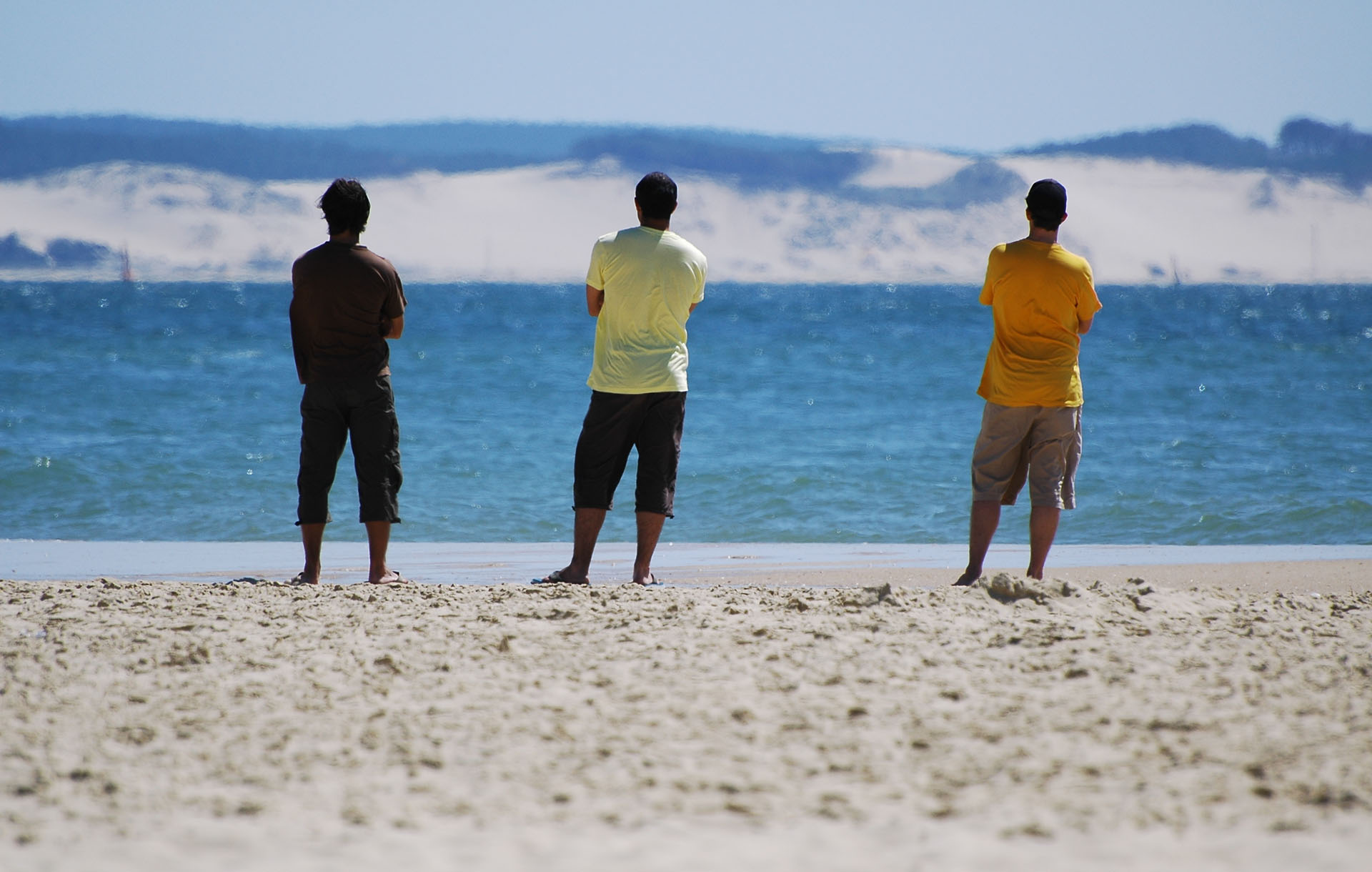The Bay of Arcachon:Sea, sand and oysters
‘To write about Arcachon is to talk about miracles. Today, this spacious beach attracts people from all over Europe: the British, Spanish, Germans and French dispute the right to build luxury villas in this paradise … Arcachon used to be a deserted place with empty beaches, where only custom officers ventured after a shipwreck, to find the body of a lost friend in order to return him to his widow or grief-stricken sons. The house of God was in the forest, where some locals went to pray in silence and fear, to the Virgin who protects, and to God who spares sailors from shipwrecks. Today, all this is replaced by the magnificent villas rising not only on the coast of Arcachon, but extending further’.
wrote Mr Gufflet in his guidebook on Arcachon.
The Bay of Arcachon. ‘A desert yesterday, a village today and a city tomorrow!’ These words of the first mayor of Arcachon, Alphonse de Lamarck Pleasance, became the motto of the city. May the 2nd 1857 became the official birthday of Arcachon. The city would have remained a desert if Francois Legale hadn’t decided to build a hotel with thermal treatments here in 1823, strange idea as it was to do such a thing on this forgotten piece of land. At that time, the only decorations visible on the coast were the beaches, pine forests, denes and a few fishermen’s houses.
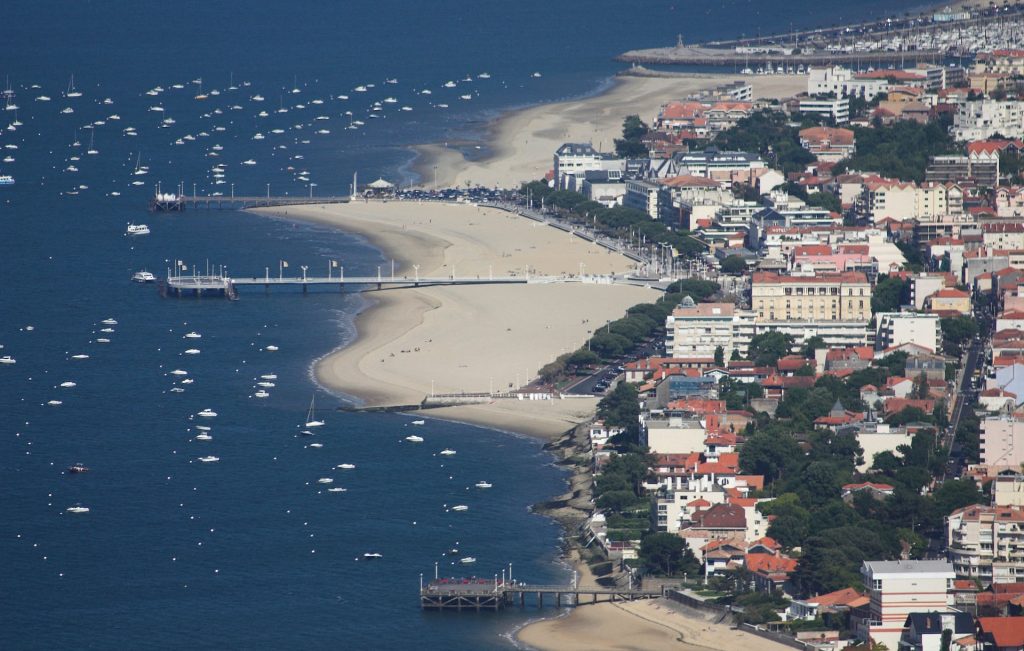
Due to the thermal treatments on offer, the first tourists to visit the Bay of Arcachon were wealthy elderly people in poor health. Family doctors often prescribed a rest on the Atlantic coast to their patients, aware of the healing properties of its marine waters. Doctors noticed that iodized air combined with the fragrance of pine forests had a positive effect on the immune system, healed the respiratory tracts and help fight against tuberculosis. Another place in the region renowned for restorative properties is St. Anne’s hot spring. The municipality and investors turned Arcachon into a city with a world reputation; healthy tourists soon replaced the sick ones in search of healing.
Annually, Arcachon produces about 10,000 tons of oysters, and the region is a major supplier of young oysters in France. About 60 – 70% of small oysters are transported from Arcachon to other regions to be raised. So, the next time you eat oysters somewhere in Brittany or Normandy remember that they may have originated in Arcachon.
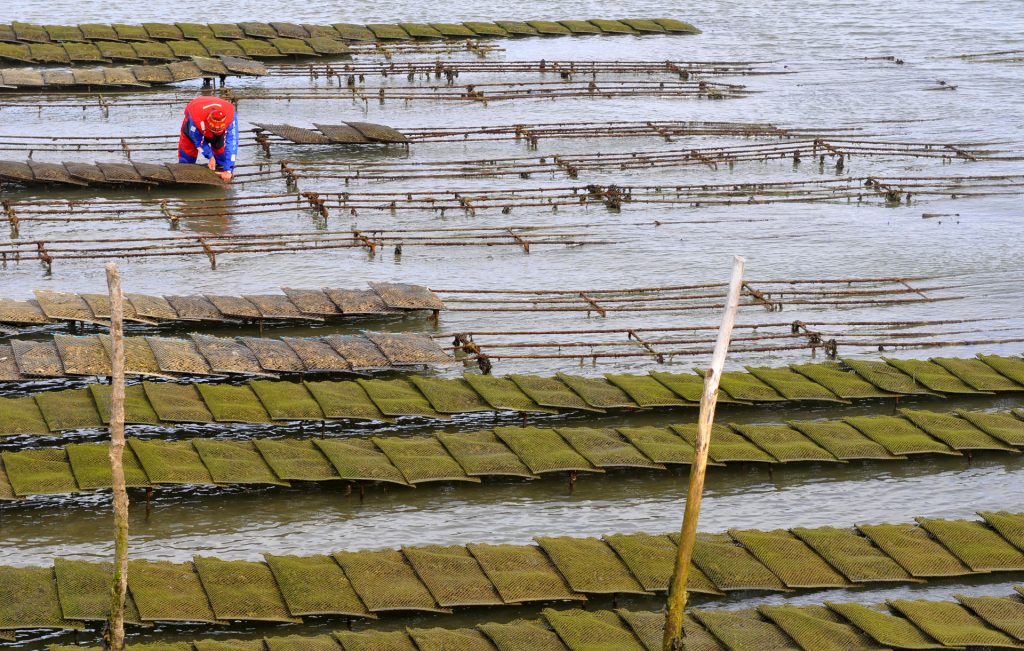
OYSTERS. We had heard a lot about the oysters from the Bay of Arcachon, so our first destination was the Port de Larros, which is located in Gujean-Mestras. The Bay of Arcachon is dotted with such ports, from La Hume to Cap Ferret – not to be confused with the Cap-Ferrat. Here you can taste the salty sea air, see wooden huts on both sides of the harbour, and spy boats and oyster barges on the muddy bottom. ‘This might be the low tide’, we thought. The eccentric hut where we decided to try the oysters was called Le Routioutiou. However, what started out as a modest tasting session gradually turned into a full-blown dinner. The owner, whose name is Fabrice, has farmed oysters in the Bay of Arcachon for many years, after inheriting the family business from his father. A very friendly and talkative person, he gave us a master class on how to open oysters and told us about his work.
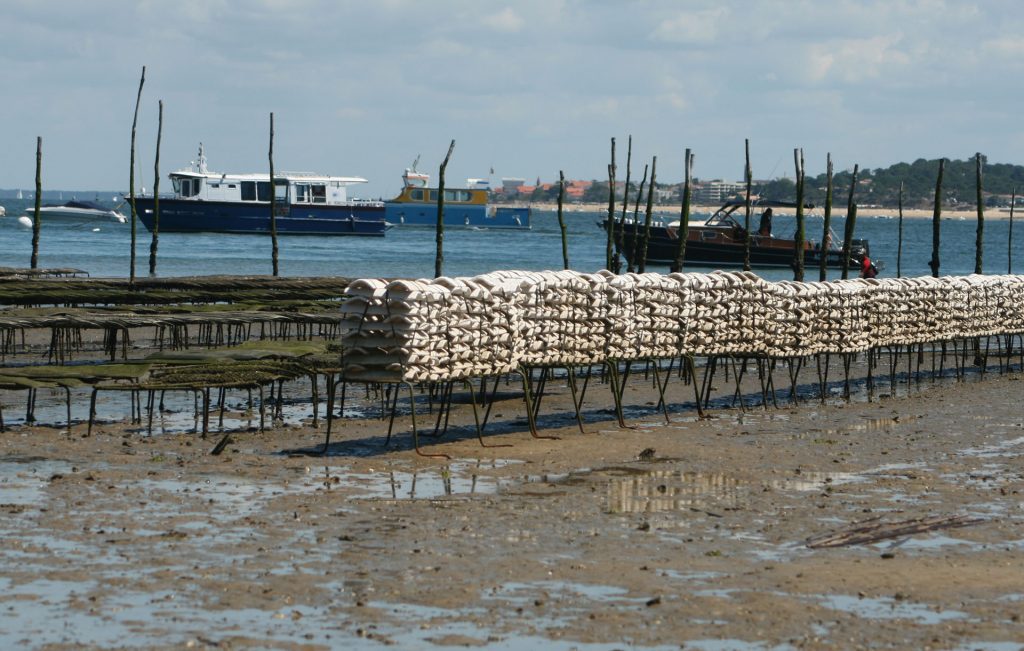
The reality is, oyster farming is hard physical work, and not very well paid at that. For this reason, many of the younger generation don’t wish to carry on the family businesses and prefer to work in the city. The figures speak for themselves; in 1960, there were 1,738 oyster farmers, but today there are no more than 350. Despite this, Fabrice remains optimistic; he enjoys his work and can’t imagine his life without the sea.
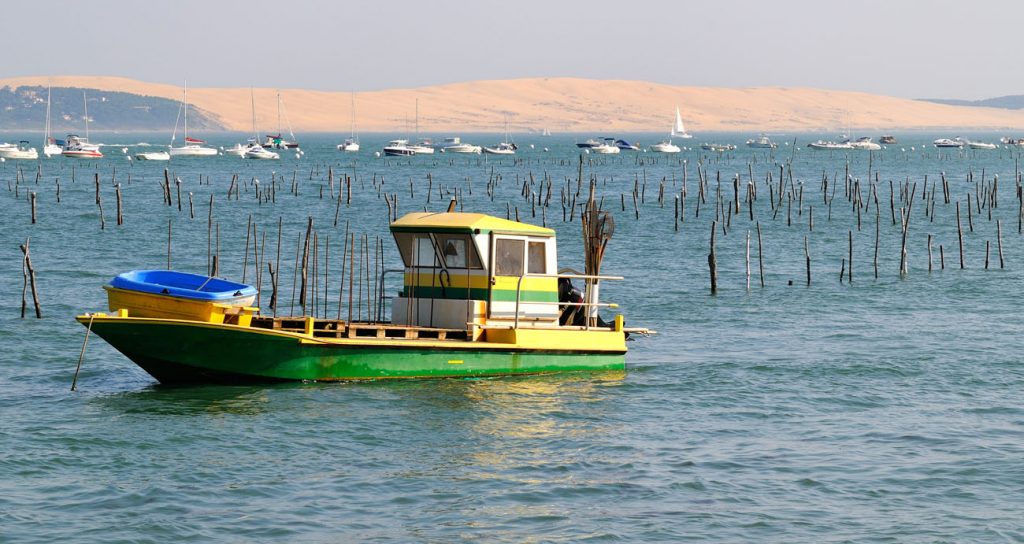
Geraldine, Fabrice’s wife, warmly welcomes guests to the hut. Together with the oysters, she served us a novel dish, butter with Espelette pepper and seaweed. Oysters from here are served at Le Routioutiou with wine vinegar, lemon, and, of course, a glass or two of local white wine. Fabrice advised us to cut the oyster from the muscle which connects it to the shell; indeed, all the flavour of the shellfish lies within the muscle.
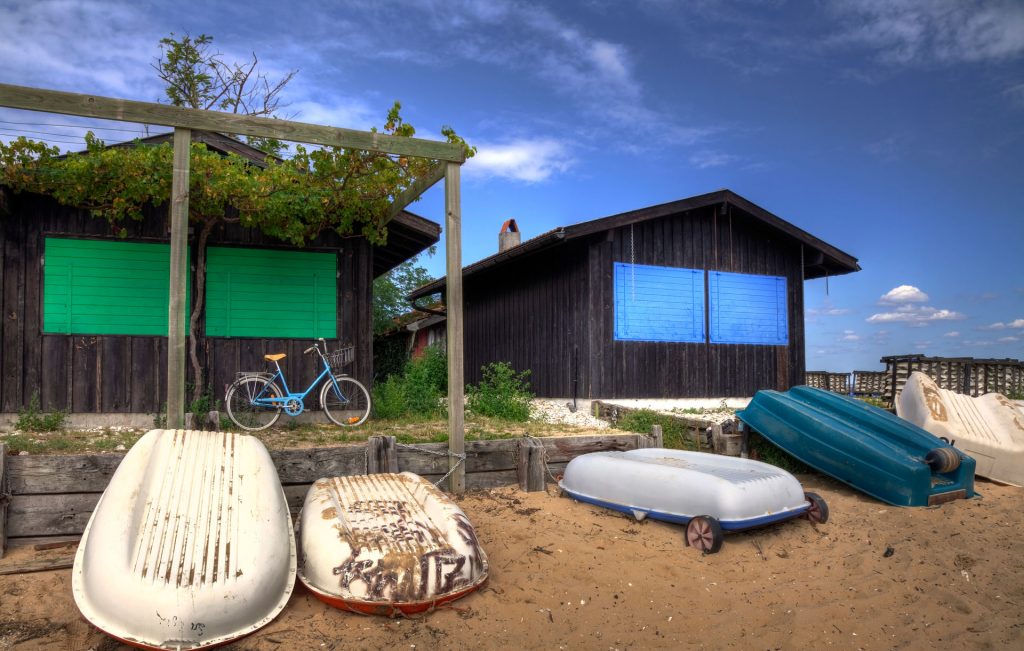
Like wines, the oysters of the Bay of Arcachon differ from one another depending on the place of origin. Experts can easily differentiate between the oyster from Banc d’Arguin, Cap Ferret, Grand Banc and from the Ile aux Oiseaux. It is of unanimous opinion that the best oysters are from Banc d’Arguin. This is because, despite the proximity of the salty ocean, the oysters have a slightly sweet flavour. They practically never move their muscles and remain tender and fleshy, and simply melt in your mouth when eaten.
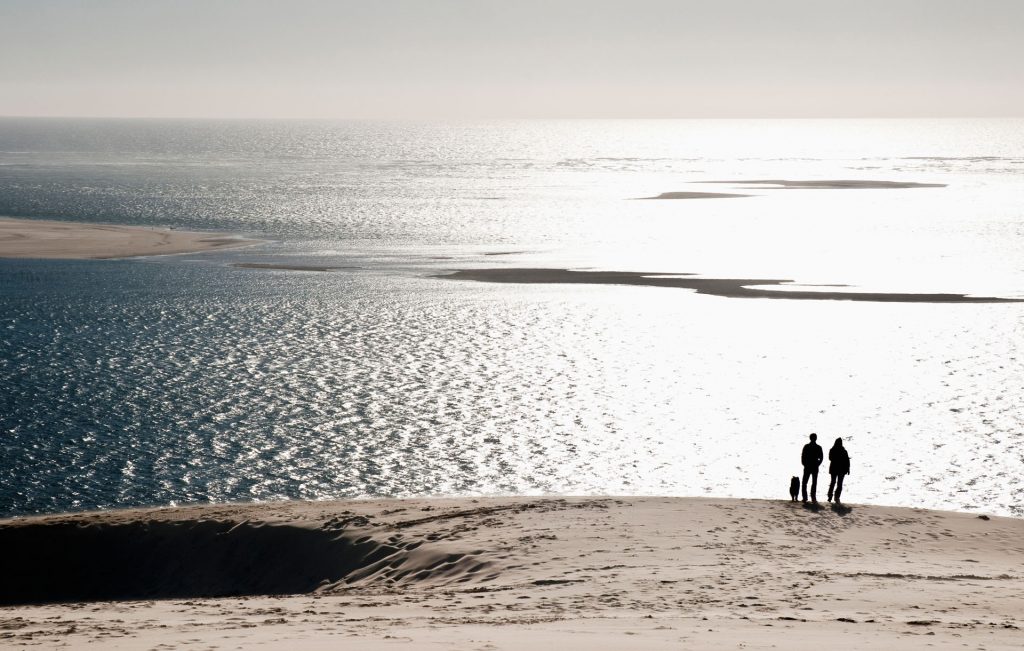
There is a peculiar tradition in Bordeaux to serve oysters with grilled sausages, such as chipolatas or a flat sausage called a ‘crépinette’. This tradition has nothing to do with mere gourmandise or an attempt to artfully combine hot and cold; the reason is much more prosaic. There was a time when the French administration didn’t allow fishermen to taste oysters without a hot meal. So they came up with the idea of eating oysters with sausages; simple and nutritious at the same time.
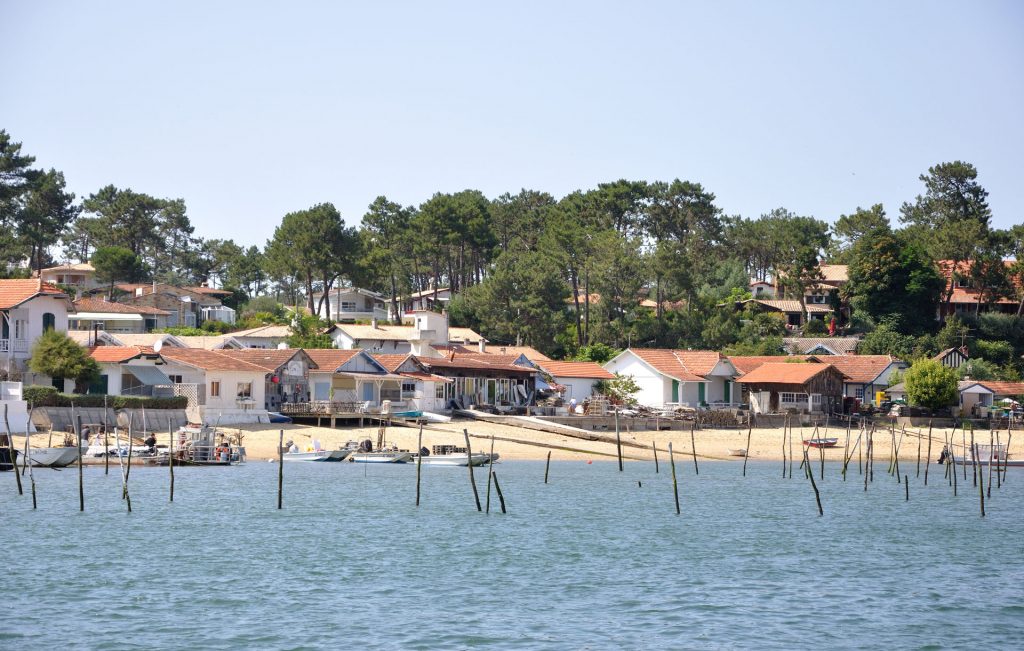
SAND. As our visit drew to a close, we were extremely reluctant to leave this peaceful haven. The sun was shining, the water was rising and the gulls were squawking… ‘I thought that France like this didn’t exist anymore’, was the contemplative comment of one of our fellow travellers. But, alas, the new discoveries lying ahead were beckoning us, and we set off to Dune du Pyla.
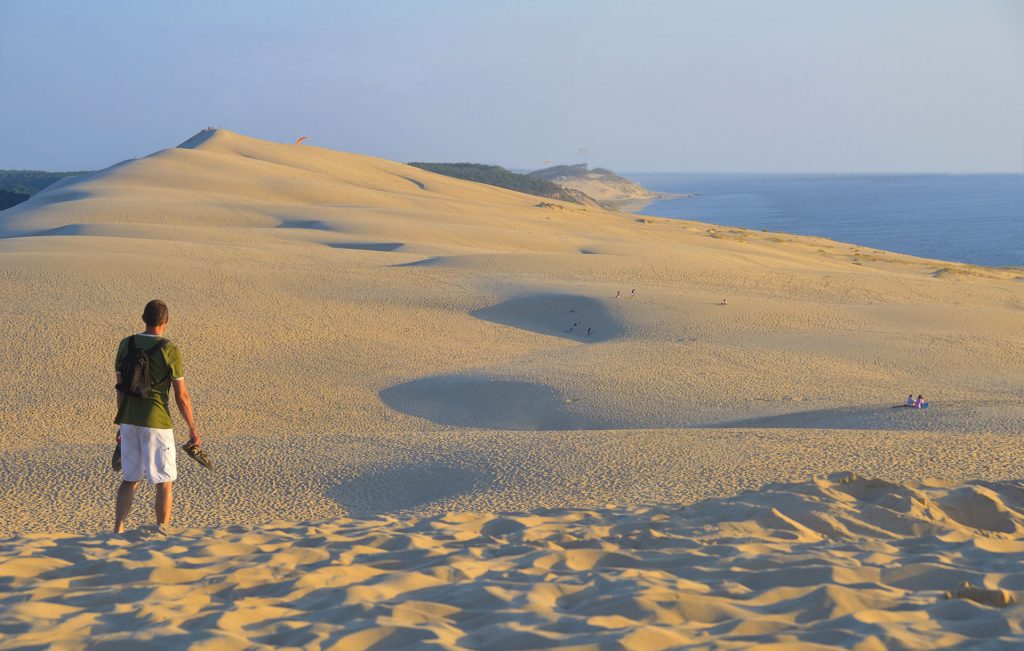
We drove to the dune through the resort town of Arcachon. The two parts of Arcachon are absolutely different, one being a summer town and the other a winter town. The summer town has beaches, hotels, residences with apartments, restaurants and shops. The idea of building the winter town belongs to the Pereire brothers. In the 19th century, a huge health concern was tuberculosis. Doctors noticed that the local fishermen and collectors of resin never contracted tuberculosis despite poor standards of hygiene. This sealed the destiny of the winter town as a large open air resort. In order to treat wealthy patients, villas in different styles were built, along with the English garden, Mauritanian casino, Chinese buffet and Grand Hôtel. Streets and alleys were designed in such a way that eliminated draughts. Overall, the winter town is a very charming area, and an interesting contrast to its summer neighbour.
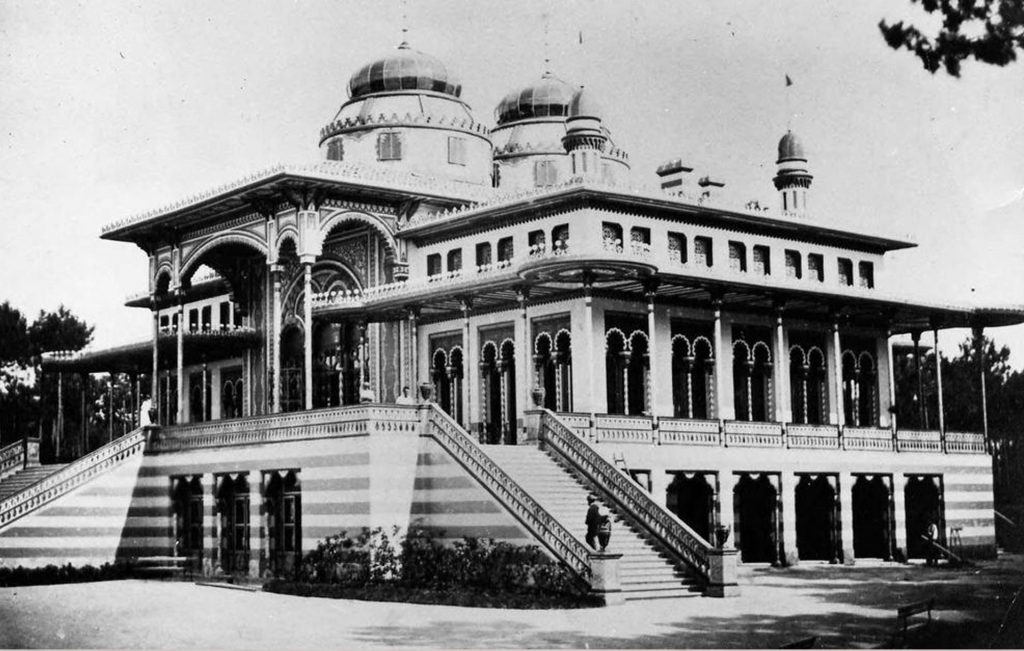
After admiring the stunning views from the observation tower Observatoire Sainte-Cécile, we went to the jetée Thiers pier, where we found a catamaran with a captain awaiting us. ‘Cast off! Raise the sails!’ he called, and we sailed along the coast to Dune du Pyla, where the sandy beauty slowly revealed itself to our eyes. Today, it is the tallest sand dune in Europe at 115 metres, and this giant sandpit enchants adults and children alike. From the water, the enormity of the dune was apparent as those attempting to climb it appeared to us like tiny ants.
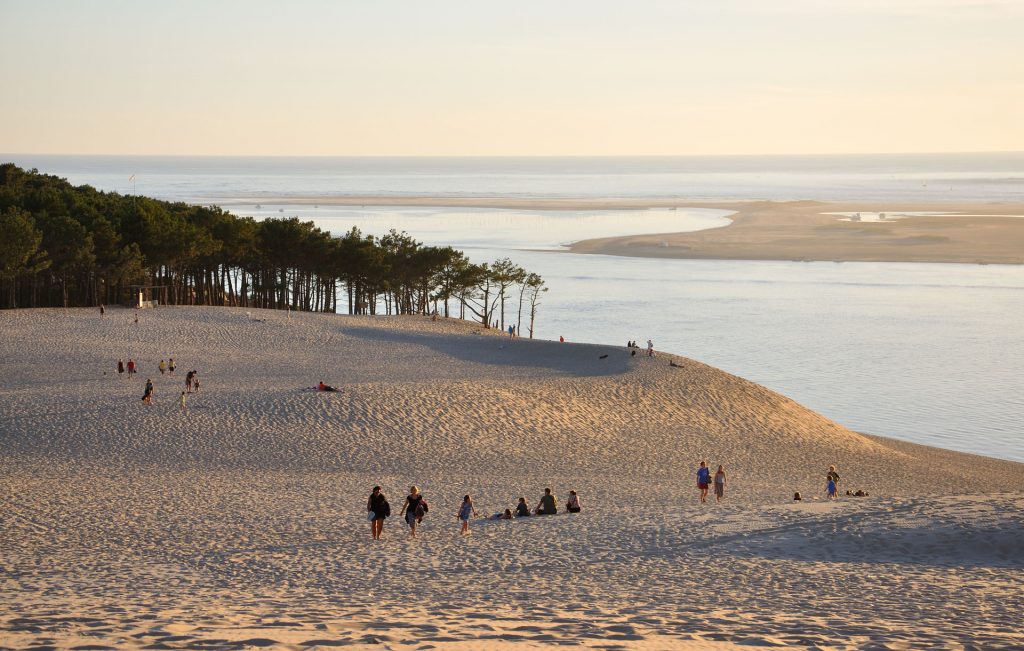
About eight thousand years ago, the sea receded and uncovered a lot of sand, part of which was later displaced to the Landes plain by the wind. Before that time, pines, willows, birches and alders grew on this vast area. In 1855, the dune reached 35 metres in height, and in just half a century it grew even higher to 83 metres. An important role was played by the sandbank Banc d’Arguin, the main source of sand. It is not only the Dune du Pyla where you can see this; to the south there is yet another mountain of sand to observe. Sailing closer to the Banc D’Arguin, you can better see the oyster parks. Oysters spend most of their lives here eating plankton. This mollusc needs about three years to grow to a medium size № 3; the smallest size being № 5 and the largest being № 00.
SEA. The coast of the Bay of Biscay in this area is called the ‘Côte d’Argent’ – the ‘Silver Coast’. It is Maurice Martin, the journalist, who attributed this colour to the shimmering waters. By that time, the Mediterranean coast had already been called the ‘Côte d’Azur’, while the northern coast of Brittany was known for its emerald colour. In the summer, the water temperature in the bay reaches 23 – 24 °C, and to the side of the Bay of Biscay it is never higher than 20-22 °C.
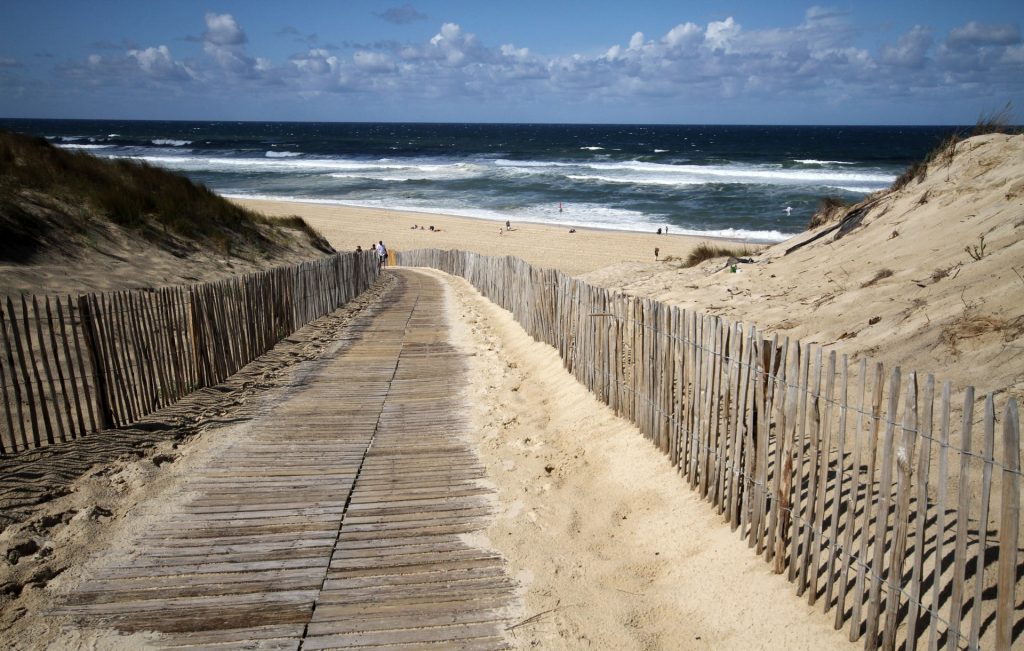
Our catamaran rounded the Argen sandbank and came to Cap Ferret, which separates the Bay of Arcachon from the Bay of Biscay. This cape is often compared to St. Tropez, as more and more French celebrities buy or rent real estate here, thus increasing the prestige of holidays in Cap Ferret. Today, a small villa of 130m2, located not far from the beach, can cost as much as 1 million euros and upwards.
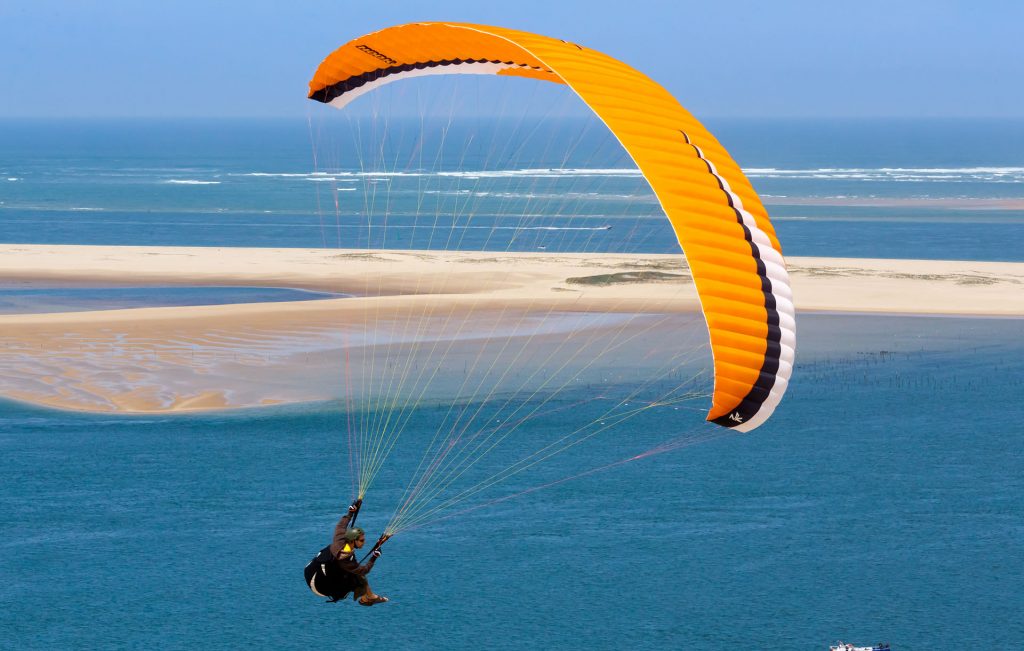
In general, the locals don’t like the star status of Cap Ferret; indeed, a fishing area turned celebrity hotspot is a transformation that is disliked by many. Yet it is the authenticity and simplicity that attract the elite. The first things that we saw when we were sailing along Cap Ferret were the tiny wooden houses with red roofs, stakes in the water and snow white coastline with boats. What beauty! Cap Ferret has a lot of wooden buildings, this being a tradition as well as a reflection of modern housing trends in France.
In the bay, between Arcachon and Cap Ferret, there is an island, called the Ile aux Oiseaux, or the ‘Island of Birds’. This was our destination. The island is literally imprisoned by the oyster parks, and serves as a kind of a hotel for such birds as the egret, curlew, broad-billed sandpiper, lark, loon and others, who like to rest here and to regain their strength.
The rising tide reduces the area of the island to 300 hectares, while the low tide increases it up to 3,000 hectares. Until the 19th century it was a place for grazing cows and horses, as well as growing crops. Unfortunately, a few devastating hurricanes put an end to that. Now there are the oyster parks with nets and stakes around the island, and on the island itself stand houses on stilts, also called ‘tchanquée’ – the Gascon word for stilts.
Bathed in the waters of the Atlantic and rich in fish and oysters, the bay of Arcachon is a popular holiday destination for the French, Spanish, Dutch and English, and remains a place of bliss and contentment, where luxurious villas are hidden under thick swathes of pines.



